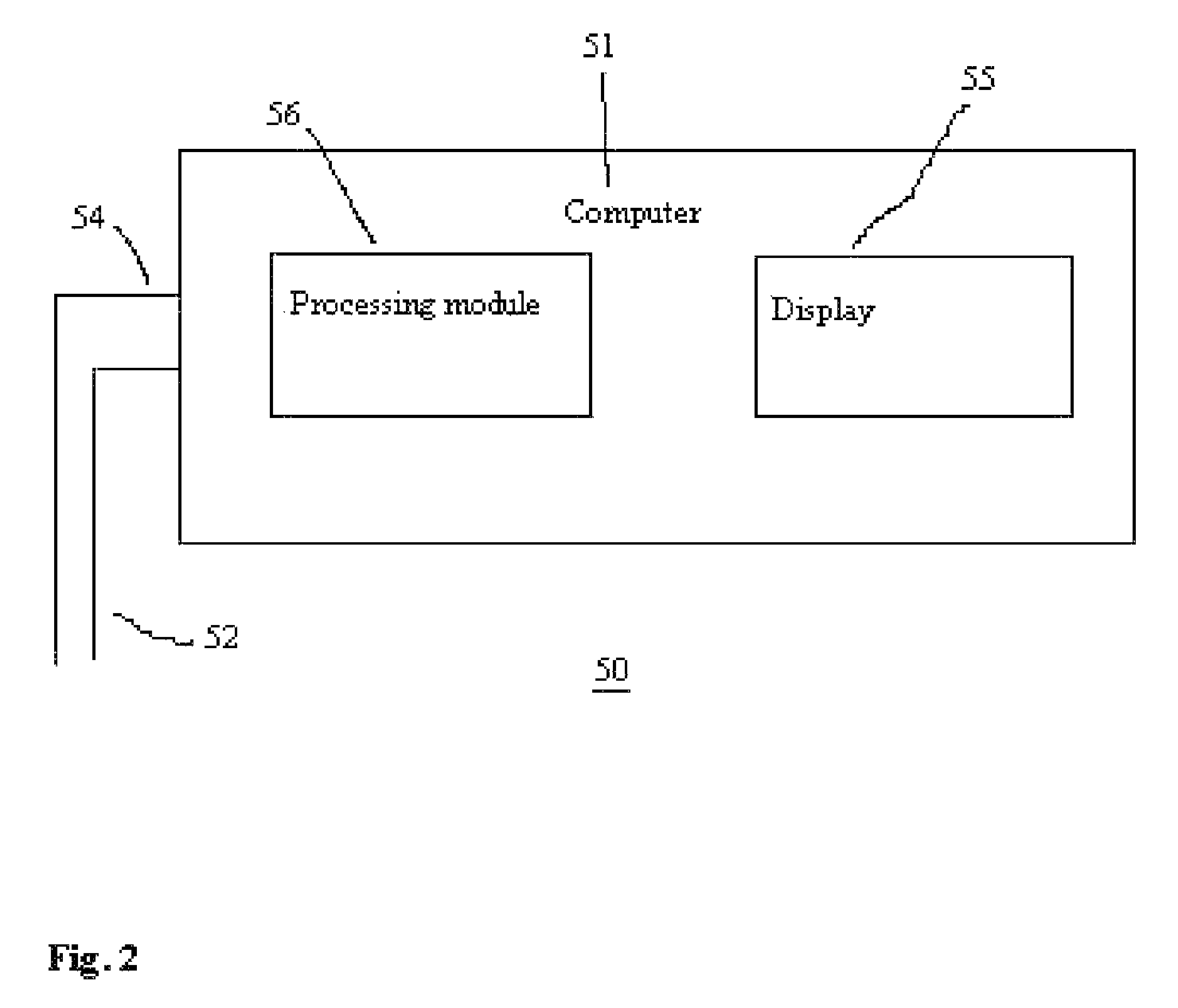Method for using photoplethysmography to optimize fluid removal during renal replacement therapy by hemodialysis or hemofiltration
a technology of hemodialysis and hemofiltration, applied in the field of non-invasive imaging, can solve the problems of abnormal decrease in patient's blood pressure, lack of fluid removal ability, hypovolemic shock, etc., and achieve the effect of avoiding patient hypotension, being more reliable, and being capabl
- Summary
- Abstract
- Description
- Claims
- Application Information
AI Technical Summary
Benefits of technology
Problems solved by technology
Method used
Image
Examples
example 1
[0065]FIG. 1 demonstrates a method for optimizing fluid removal in a patient undergoing RRT. A central pulse oximetry / photoplethysmography sensor is placed on the cheek, nasal septum, alar nares, or tongue. An optional peripheral pulse oximetry / photoplethysmography sensor may be placed on the patient's finger or toe. Before and during dialysis, a number of derived parameters are monitored. At the start of dialysis, the amplitude and area under the curve (AUC) of the fast component of the photoplethysmograph are calculated from one or more monitoring sites and a ratio of the amplitudes and / or AUC is calculated. This represents the relative blood flow to the head (brain) and the optional peripheral site. As fluid is removed during RRT, this ratio may change (i.e. greater flow to the head than finger) or since many dialysis patients lose the normal reflexive responses to fluid depletion, there may be an equal or greater loss in amplitude and the AUC from the probes monitoring the head....
example 2
[0067]In FIG. 2, there is shown a system 50 for obtaining and processing photoplethysmography data from a patient for purposes optimizing fluid removal during RRT to avert hypotension. The system comprises a computer 51 that is configured to receive and process signals from lines 52 and 54, which are distally connected to one or more pulse oximeter probes (not shown) located on the patient. Those skilled in art will appreciate that the signals may be preprocessed to some degree by a separate signal processor and subsequently sent as one signal stream to the computer 51. Thus, the computer 51 is configured to receive signals from either lines 52 or 54 or a combination of both. Typically, one of the lines will carry power from the computer 51 to the pulse oximeter probe, while the other line carries signals back to the computer 51. The computer 51 comprises a processing module 56 with program code module(s) and / or electrical / circuitry components associated therewith to direct the proc...
example 3
[0070]FIG. 4 demonstrates a method for optimizing fluid removal during RRT by use of photoplethysmography to monitor a patient's blood flow and / or volume status. The method comprises determining the arterial component signal and / or the venous capacitance component signal in said patient utilizing photoplethysmography; and adjusting the ultrafiltration rate so as to modulate the arterial component signal and / or the venous capacitance component signal to maintain a patient's blood flow and / or volume status at a target level.
PUM
| Property | Measurement | Unit |
|---|---|---|
| wavelength range | aaaaa | aaaaa |
| wavelength range | aaaaa | aaaaa |
| frequency | aaaaa | aaaaa |
Abstract
Description
Claims
Application Information
 Login to View More
Login to View More - R&D
- Intellectual Property
- Life Sciences
- Materials
- Tech Scout
- Unparalleled Data Quality
- Higher Quality Content
- 60% Fewer Hallucinations
Browse by: Latest US Patents, China's latest patents, Technical Efficacy Thesaurus, Application Domain, Technology Topic, Popular Technical Reports.
© 2025 PatSnap. All rights reserved.Legal|Privacy policy|Modern Slavery Act Transparency Statement|Sitemap|About US| Contact US: help@patsnap.com



